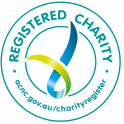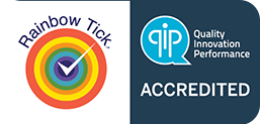How the HOPE program helped John after suicide attempt
John had a serious self-harm attempt and presented to an emergency department. He’d stopped taking the medication for his mental illness and was living with delusional thoughts which were creating strong paranoia.
The hospital referred John to the Better Place Australia HOPE Outreach Program. It was there that he met the Better Place Australia practitioner. The practitioner worked carefully with him to gain his trust.
“It was clear that John didn’t have a great understanding of his mental illness and how his condition might impact him when he stopped taking his medication,” shared the practitioner.
As part of the program’s method, the practitioner met with John in a local cafe over a coffee and listened to John, allowing him the space and the curiosity as to why the situation occurred.
The practitioner said, “Taking time is a key to good supports like the HOPE Outreach Program. When I had established rapport and trust with John, I was able to introduce him to a clinical social worker within the hospital.” (Part of the practitioner’s role in the program is to facilitate the connection with supports and resources to assist John in obtaining the best care).
The clinical social worker was able to start a conversation around medication, correct medications and correct diagnosis. John learnt more about his condition, particularly around the dangers of stopping medication quickly.
John was also linked into the continuing care team (CCT) at the hospital. (CCT is a longer term clinical service that operates in the community.) He was assigned clinicians, a GP and a psychiatrist. The CCT team were able to look at the medication John was taking, the psychological and social stresses that he was experiencing, and his lack of understanding of the mental illness. John’s medication was reviewed and changed.
The outcome was very good for John.
During the time spent with the CCT team, John was continually supported by the practitioner as part of the HOPE Outreach Program, including weekly check-ins and emphasising the importance of social connections.
The practitioner shared, “Towards the end of the 12 week program, John asked me ‘What do I do now?’ My response was, ‘Now that you have your support and connections in place, why don’t you think about going back to work?’ ”
John worked for a large organisation and was a permanent employee that had been on long-term sick leave. The practitioner encouraged him to go to his boss and say he’d like to come back to work. “The organisation, to its credit, had policies that supported John’s transition back into work”, said the practitioner.
They assigned John a return to work officer, so he was able to begin to plan how he would return to work. John was assisted through the lengthy process involved around medical clearances, and after three months, was back working three days a week.
That was five months ago.
John now works full time again and his medication has stabilised. The practitioner shared, “He had a considerable process delay when he was unwell with his speech. That’s completely gone now. His paranoia has gone and he’s been able to re-engage with his friends, and with his social connectedness. He’s been able to go back to basketball, and watch anime with his friends, which he was not able to do when he came to us.”
Better Place Australia HOPE Outreach Program
The HOPE Outreach Program for South East Melbourne is provided by Better Place Australia. To find out more and contact us, go to our HOPE Outreach Program page.
Need urgent assistance?
Dial 000 or go to your nearest hospital emergency department
Suicide Call Back Service (24 hours) 1300 659 467
Lifeline (24 hours) 13 11 14
Monash Health Psychiatric Triage Service 1300 369 012
Beyond Now suicide safety planning app






